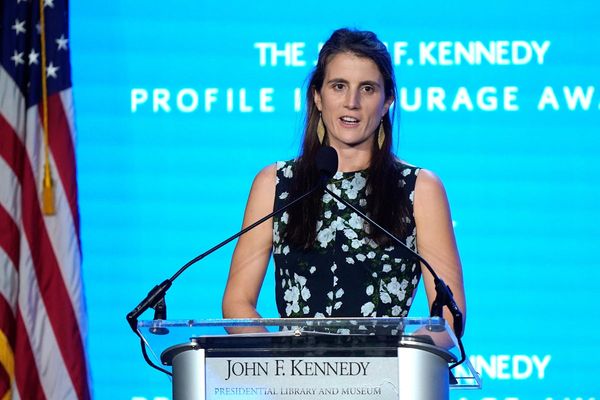
Despite decades of data that show gender-diverse teams deliver better results, women continue to lack access to investment capital. In African venture capital, less than 1 percent of the more than $3 billion raised in the past two years has gone to women-only-founded start-ups. Although the gender finance gap is not new and not limited to African markets, the lack of women in leadership positions in finance, specifically those participating in capital allocation decisions, perpetuates the current situation ultimately limiting women entrepreneurs’ access to financing globally.
However, development finance institutions (DFIs) are well positioned to change the status quo by driving the adoption of gender-equitable standards throughout their entire portfolios, which are concentrated on emerging markets—just as they successfully did with the implementation of environmental, social, and corporate governance (ESG) standards over the past 15 years. The U.S. International Development Finance Corporation (DFC), a leader in advancing women’s access to capital through the “2X Challenge,” recently announced it will mobilize $12 billion in funding by 2025 to invest in businesses that advance gender equity as well as establish a dedicated technical assistance program to support clients looking to advance their own gender-equity practices. Although a commendable step, the DFC should go one step further and adopt clear, phased-in standards for gender equity in all of its investments, and in doing so, make gender-equitable investing an accepted compliance step rather than a siloed program that often falls short of delivering rapid change. The “Women on Boards” law in California presents a model. Passed in 2018, it requires all public companies based in the state to have at least one female director on a board, with increasing requirements over time.
Venture capital firms with women partners are twice as likely to invest in companies with a woman on the management team and three times more likely to invest in companies with women CEOs. Yet, only 12 percent of senior general partners (GPs) in Sub-Saharan African private equity/venture capital (PE/VC) firms are female, and globally, the number is even lower at 11 percent, which is relevant since a large portion of PE/VC investments in Africa are from non-African PE/VC firms. And unsurprisingly, gender-balanced PE and VC teams (defined as women in 30 to 70 percent of leadership roles) have a 20 percent higher internal rate of return compared to male-dominated teams. The DFC itself has acknowledged the importance of advancing gender balance at the fund manager level through its investments, alongside the European Investment Bank, in Women’s World Banking Capital Partners II. However, even DFIs themselves are often underrepresenting women in positions of leadership. Under the Trump administration, all the DFC’s Office of the Chief Executive and Board of Directors’ members were men; this has seen considerable improvement under the Biden administration, and as the DFC continues to fill appointments, it should continue this momentum.
The California “Women on Boards” law set a clear, phased-in standard that allows companies to easily comply and report without onerous tracking or paperwork. Although the law required one woman director by the end of 2019, it also requires more women directors by the end of 2021 depending on the size of a company’s board. The repercussion for not complying is a straightforward fine. Since enacted, 45 percent of new board seats among Russell 3000 companies based in California have gone to women, compared to 31 percent nationally. In 2019, women were added to at least two dozen all-male boards. By initially targeting companies with no women board members and requiring further gender equity from those originally in compliance over time, the law reaches its maximum impact, effectively requiring all companies to consider the gender makeup of their leaders.
DFIs are no strangers to the power of setting standards. In the 2000s, DFIs, along with others in the development community, led the way in determining how to systematically incorporate nonfinancial development metrics alongside traditional financial metrics when evaluating investments. This further analysis, looking at a broader range of company practices and impacts, came to be known as ESG. Given the outsized role DFIs play in Africa’s investment landscape and their mandate for development impacts, DFIs lead the way in institutionalizing the use of such nonfinancial standards in African market investment decisions. With an expanded budget and new equity authorities, the DFC now has the ability to set standards for gender-equitable investing and move the needle on addressing the gender wealth gap, which has only worsened during COVID.
Unlike ESG compliance, which can be difficult to track and is costly for companies, DFC should follow California’s lead and start by setting a simple standard to increase the role of women in finance leadership positions. The DFC could announce that by 2023, it will no longer invest in funds or directly in projects that fail to meet a 30 percent threshold of women on their senior teams. Existing portfolio firms and funds should be told that follow-on investment from the DFC would require meeting the same standard. By clearly setting a simple requirement that women must be in decision-making roles, the DFC can help address deeply rooted gender-equity and inclusion challenges in deal sourcing, pipeline development, portfolio company product offerings, and workplace policies. Instead of mandating the DFC only invest in women-focused companies or funds that already have women in leadership—or mandating the DFC focus on women initiatives in a separate silo—the DFC can maximize its impact across the entire private equity emerging markets industry by investing in what are today male-run funds and establishing a clear time frame for them to implement gender diversity.
In addition to new standards, the DFC should look to support programs that promote gender equity to help build the next generation of women leaders in finance. This requires a focus on increasing women’s networks, which are often smaller and less effective than those of men. The DFC could partner with industry-specific groups like the Private Equity Women Investor Network to identify potential female fund managers (who are often first-time managers) and better connect women to opportunities to receive government investment. Following in the footsteps of the CDC Group’s $2.2 million investment in TheBoardroom Africa, which connects peer-endorsed female leaders with CEOs and board directors across the continent, the DFC should also look to invest in companies focused on supporting women’s unique professional and business needs.
In setting a new standard for gender-equitable investing, the DFC doesn’t have to look far for inspiration. In December, Nasdaq announced its intention to require listed companies to appoint at least one woman and at least one minority or LGBTQ+ person to their boards. With the benefits of gender equity consistent globally, the DFC should learn from domestic shifts and apply these same standards to the international arena.







